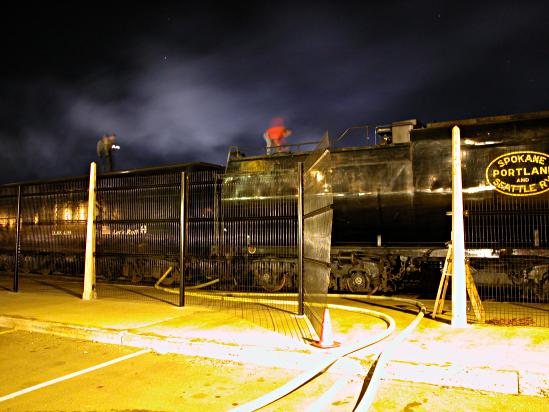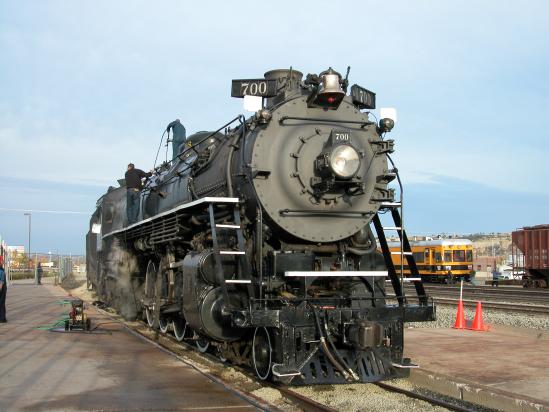
Billings is in the 1st Subdivision at MP 15.9. The east and west excursions were centered on two weekends, hence the midweek three day layover in Billings. While this provided for crew rest, we did not plan on just being idle. All five of our layover days, Oct 11 and 21 in Sandpoint, and these three days in Billings included Operation Lifesaver presentation days. Our location in Billings was right near the depot.
After traveling roughly one thousand miles, the 700 gets a thorough cleaning on our first layover day in Billings. One of our engineers, Jim Abney, is atop the 700. The yellow car visible just to the right of the 700's pilot is a Sperry Rail Services car. A photo of it is below. Photo by Dale Birkholz.

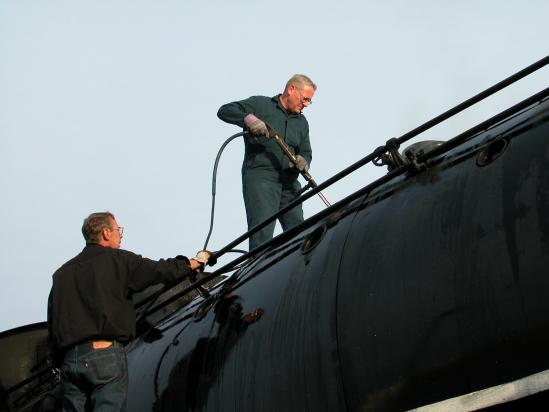
This Sperry Rail Services car was spotted by the 700 for a while. It checks the rail profile. Photo taken from our tool car by Terry Thompson.
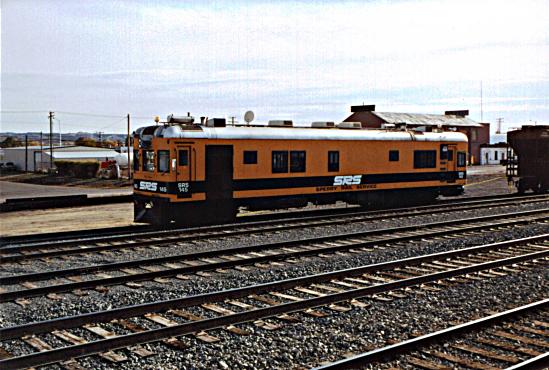
The PRPA Concessions trailer, hitched to Arnie Holden's truck, was open for business in the parking lot along side the 700. Photo by Frances Matlock.
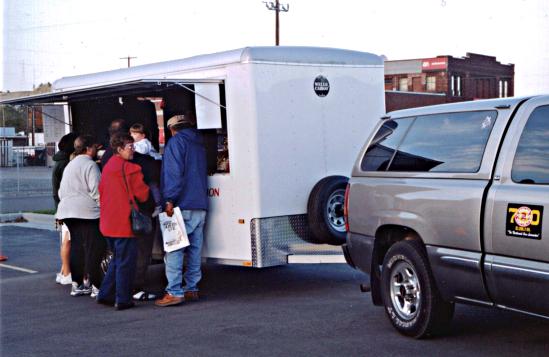
PRPA Concessions trailer, inside are Don Matlock, Liz Lippert and concessions crew leader Patsy Kimzey. Photo by Frances Matlock.
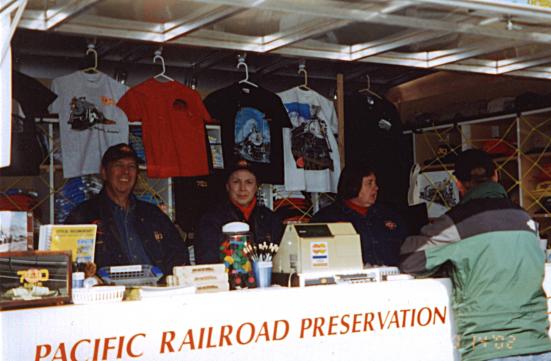
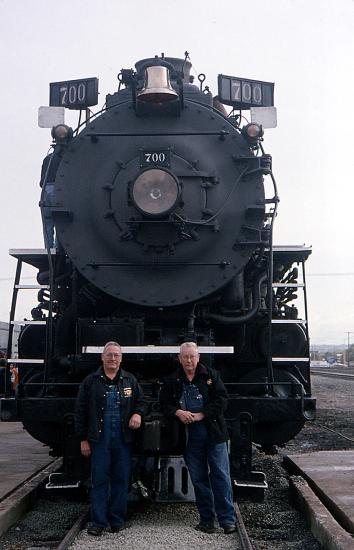
Each day of the layover brings a steady stream of visitors to see the steam locomotive and the evening of the 17th is no exception. Many of them have their own stories to tell about their father, grandfather, or uncle who worked for Northern Pacific in steam days. Photo by Arnie Holden.
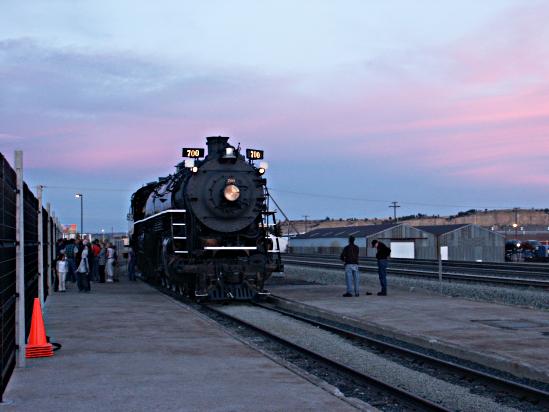
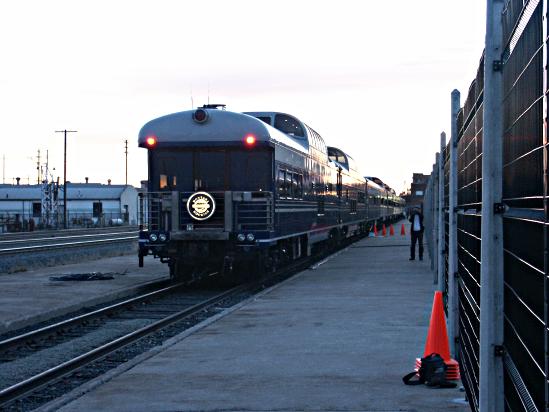
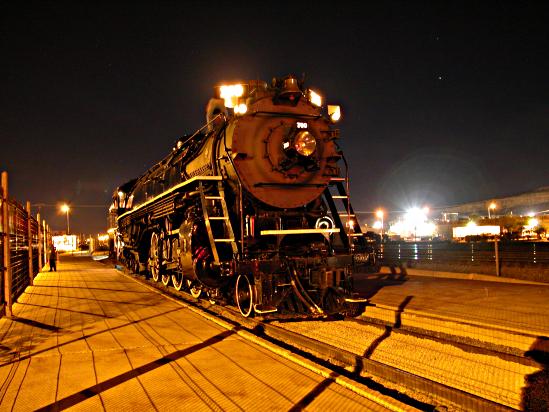
In front of the 700, the Glacier Park dome car, with its passengers presumably snoozing. Early in the morning, the 700 will assume its position at the head of the train. Photo by Dale Birkholz.
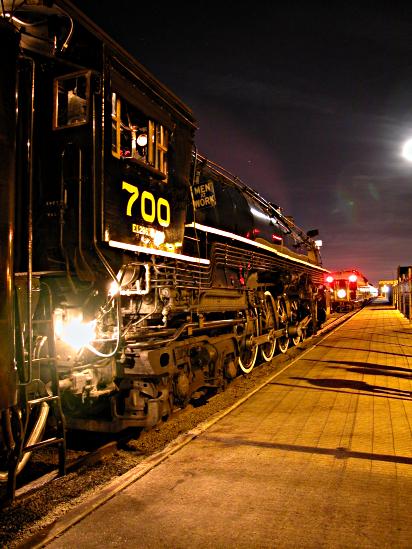
In the days of steam, filling your tender with water was a simple matter compared to today. Back then, you spotted the tender by a water tank, swung the fill pipe over the tender and let the water flow by gravity. Since the pipe was a fairly good diameter, the fill didn't take too long. The water tanks were spaced with tender capacities in mind. In railroad jargon a "tank town" was a small town with a water tank and not much else.
Nowadays, steam excursions on the scale of magnitude of Montana By Steam need about a year headstart to plan all the logistics plus a scouting trip or two. The water logistics includes locating water sources, getting the necessary permissions, planning how to spot the engine and tender(s) for the tender fill, checking distances against hose count, taking water samples to plan water treatment, checking distances between fills, and maybe some other things I've left out.
Since the water tanks aren't there at those "tender-sized" intervals anymore, the water sources are located in towns with fire hydrants, usually. As a result, most "big steam" excursions use an auxiliary tender to augment their water capacity. The 700's tender holds 20,000 gallons of water and 6,000 gallons of fuel. We borrowed the 4449's "aux" tender from our good friends next door at the Brooklyn roundhouse. We thank Doyle McCormack for his generosity. The 4449's aux tender has the fuel bunker converted to also hold water for a capacity of approximately 30,000 gallons, giving us a combined capacity of about 50,000 gallons of water. Incidentally, the 4449 aux tender was also used by the 3751 group on their trip to the Grand Canyon in 2002.
The 700 evaporates water at a rate of anywhere from 100 to 200 gallons of water per mile, depending on the load and grade. If you used every last drop of water at a rate of 100 gallons per mile, 50,000 gallons would take you 500 miles, and at a rate of 200 gallons per mile would last 250 miles. Suffice it to say, it's better to have too much water than not enough.
Most of the tender fills were simple compared to Billings, just spot by a hydrant and connect a hose to the tender. At Billings the designated hydrant was across a fairly busy street, so the fill was done in the night to minimize disruption to traffic and involved fire dept personnel, one of whom is getting things set up here. Captain Rich Elsenpeter standing at the pump panel. Photo by Dale Birkholz.
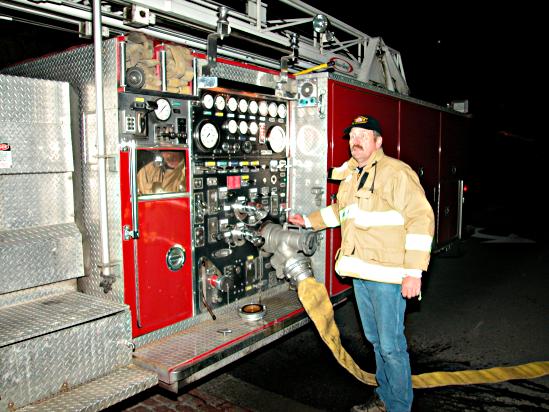
Billings Fire Dept personnel get ready to fill both tenders at once, main tender in the foreground and aux tender in the background. The bright decal on the main tender is a "Portland Rose" titled "City of Portland, Parks and Recreation Department". Captain Rich Elsenpeter standing and Captain Don Regnier kneeling. Photo by Dale Birkholz.
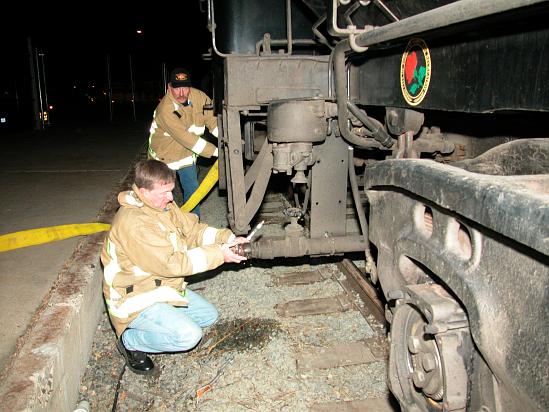
Here the pumper takes water from the hydrant, and discharges into two hoses at a pressure controlled by the pumper. The 700 is to the left behind the fence. You can see the steam plume passing behind a street light in the parking lot. Photo by Dale Birkholz.
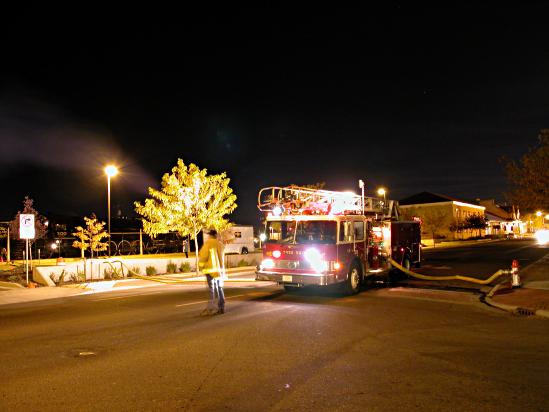
The two hoses lead to the tender and "aux" tender. On top of the tender, PRPA's Steve Speer (in the red jacket) watches the water level while Jeff Tryka does the same on the aux tender. The aux tender has a higher hydraulic head than the main tender so after the main tender is full, the valve on the interconnecting hose is shut to prevent spill over the top. When we are running the next day, the interconnecting hose will remain shut until the main tender's water is pulled down enough to catch the extra water. Photo by Dale Birkholz.
